1. Six Flags New Orleans – Nature Took Over the Fun
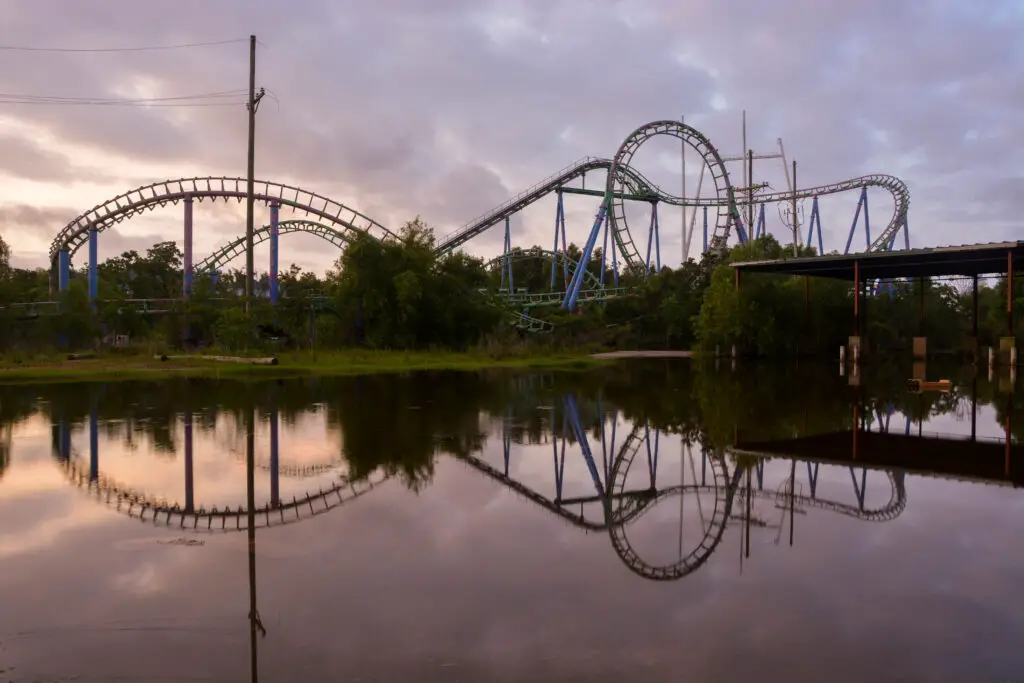
When Hurricane Katrina hit in 2005, it didn’t just flood homes and lives—it swallowed a whole amusement park. Six Flags New Orleans was left submerged for weeks, and when the water receded, the rides sat rusted and silent like eerie monuments to chaos. They were never rebuilt. The place now feels like a dream half-remembered, with roller coasters entwined in vines and faded signage clinging to broken poles.
Explorers sneak in sometimes, capturing haunting images of clown heads bobbing in swamps and carousel horses frozen mid-gallop. It’s less a ghost town, more a graveyard of manufactured joy. Even the Ferris wheel seems somber, overlooking a landscape that’s given up on laughter. The city decided it was cheaper to let nature win than to resurrect the park.
2. Lake Shawnee Amusement Park – Playground Built Over Tragedy
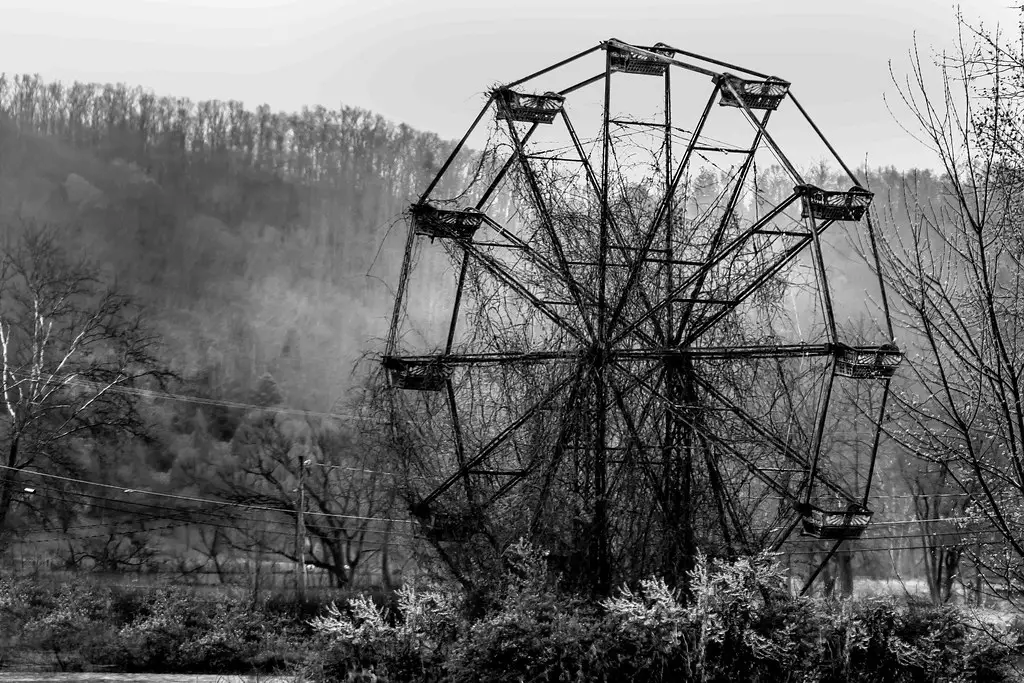
This West Virginia park might just have the most cursed blueprint in America. It was built on the site of a violent 18th-century settler massacre—and then reopened as a funfair in the 1920s. But chillingly, several children died during its operation: one drowned, another was struck by a swing ride. Locals started whispering that the land itself was rejecting joy.
Ghost hunters now flock here in hopes of meeting long-lost spirits between rusted swings and skeletal ticket booths. The site’s owners lean into the legend, offering haunted tours that dare you to stay after dark. You don’t need a psychic to feel the unease crawling up your spine when the wind rustles the trees. It’s said the land remembers, and here, it reminds you.
3. Holy Land USA – Religious Iconography Frozen in Time
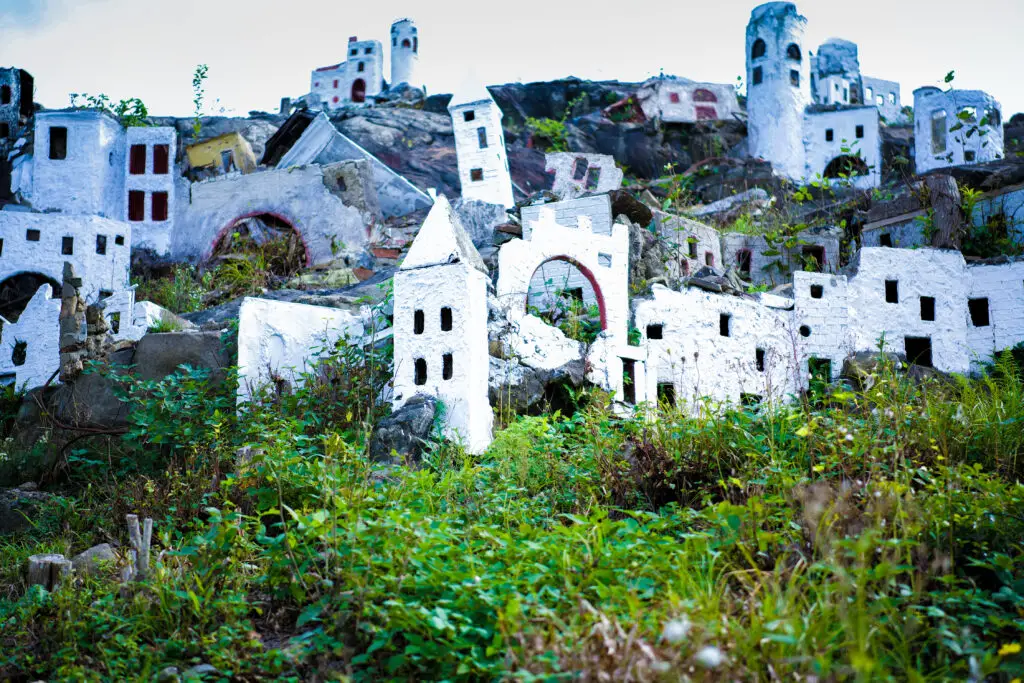
In Waterbury, Connecticut, someone once thought combining faith and kitsch could draw crowds. Holy Land USA opened in the 1950s as a biblical theme park, replete with miniatures of Jerusalem and Bethlehem, plus a glowing cross atop a hill. But when funding dried up in the 1980s, Jesus and company got ghosted. The ruins stand now as oddly poignant reminders of an ambitious spiritual theme gone sideways.
Visitors sometimes describe the vibe as “post-rapture” meets “Christian apocalyptic.” Statues of saints have cracked faces, and holy messages are barely legible beneath moss. A tragic death in the early 2000s made the site even more infamous and nearly pushed it into total closure. There was a brief attempt at resurrection—but divinity never returned.
4. Dogpatch USA – A Cartoon That Couldn’t Compete

Nestled in the Ozarks of Arkansas, Dogpatch USA was inspired by the “Li’l Abner” comic strip—a hillbilly utopia full of quirky charm. But by the 1990s, the joke had worn thin. Attendance plummeted, investors bailed, and the rides went quiet. Eventually, wild animals wandered in, making the place feel more like a weird Appalachian safari than an amusement park.
The buildings still stand, some comically tilted like they’re stuck mid-laugh. A rusted pig statue marks where the petting zoo used to be, and vines snake up hand-painted signs that once beckoned kids to come play. There were efforts to revive it as an eco-resort, but nothing stuck. These days, only nostalgia and raccoons roam freely.
5. Miracle Strip Amusement Park – Lost to the Condo Boom
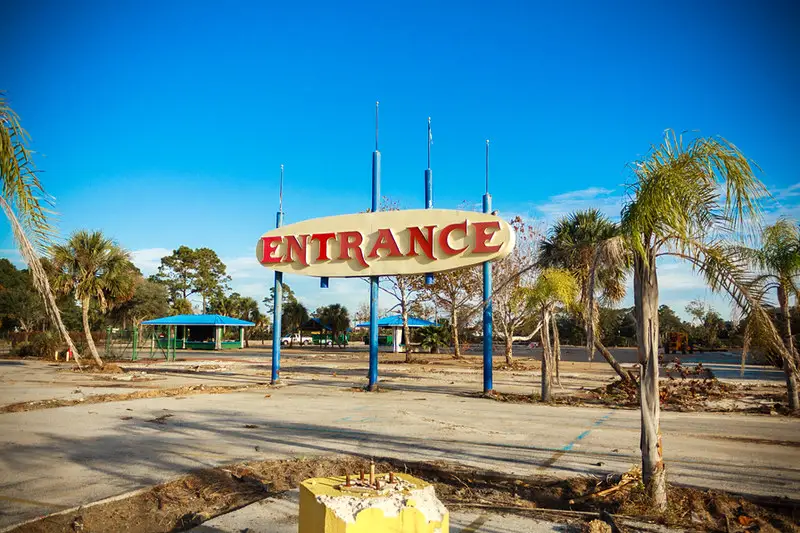
Once the heart of Panama City Beach, Miracle Strip was all cotton candy skies and ocean breezes. Its star attraction was the Starliner roller coaster, a wooden classic that rattled your bones while giving unbeatable Gulf views. But by 2004, the land was worth more as real estate than as childhood memories. The rides were dismantled, and the park vanished under luxury condos.
It’s a classic case of paradise sold off piece by piece. Some locals still talk about the bumper cars and arcades like they were old friends. A mini version was later built—but never recaptured the original magic. Sunsets still glow over the area, but now they shine on glass windows, not twinkling carnival lights.
6. Chippewa Lake Park – Partying into Oblivion
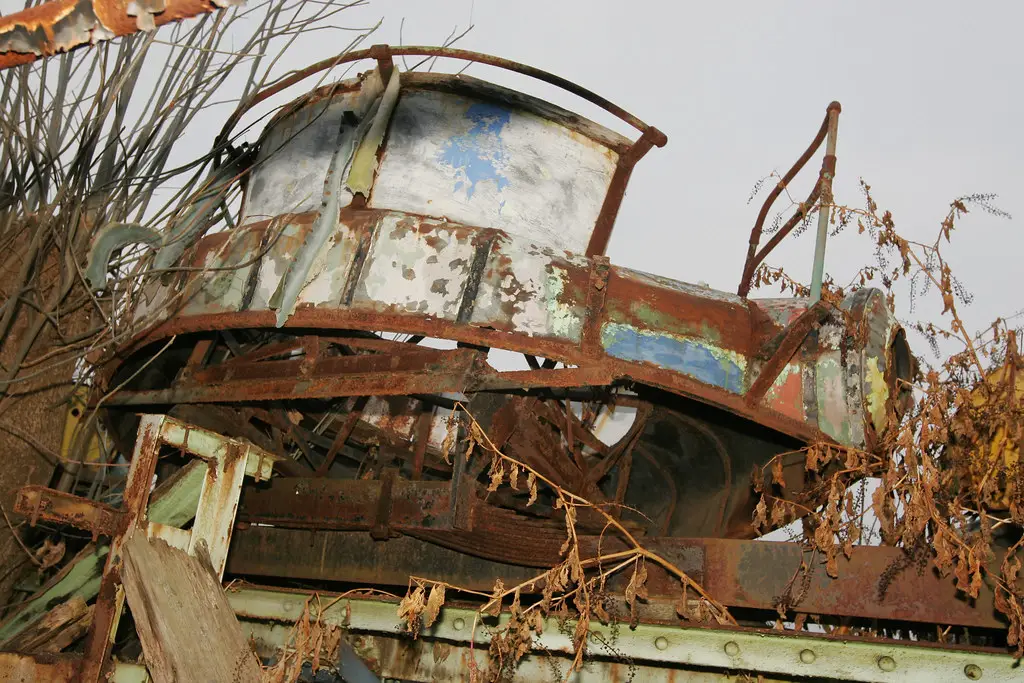
For nearly a century, Chippewa Lake Park was the pride of Ohio’s amusement scene. It started in the 1870s and operated through three generations before quietly closing in 1978. No big goodbye, no dramatic finale—just silence. Everything was left standing, like someone paused the game and never pressed resume.
Now, it’s a ghostly jungle. Trees punch through the roller coaster tracks, and bumper cars sit like fossilized laughter. Even after decades, the echoes of kids screaming on rides seem to cling to the air. Occasionally, someone tries to revive it—but it feels like the park already made peace with being forgotten.
7. Jazzland – The Other Park Katrina Drowned
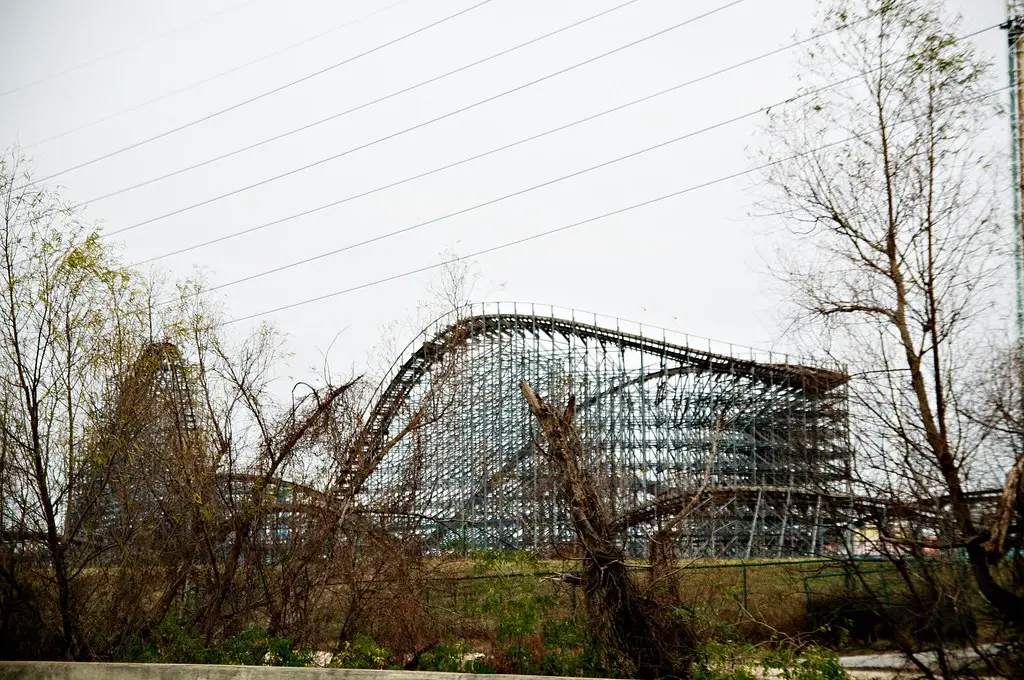
Before it was Six Flags New Orleans, it was Jazzland—a locally themed park with jazz-inspired architecture and a bold ambition to celebrate the city’s spirit. It opened in 2000 but didn’t make it long before bankruptcy struck. Six Flags bought it, rebranded, and ran it for five years… until Katrina arrived and turned everything upside down.
Jazzland’s original touches are still visible beneath the overgrowth—iron fences shaped like musical notes, trumpet-shaped light posts, signs with faded references to Louis Armstrong. The irony of a park meant to echo joy now whistling with wind through ruins is almost poetic. Plans to redevelop it appear every few years but always stall. Like an unfinished song, it waits for someone to strike the right chord.
